Related Tags
“It felt like hot-rodding cars to me”: Robert Keeley on his career switch from engineering professor to star pedal maker
Some stars of the gear world have made a name for themselves by discerning a gap in the market and driving hard into it. For Robert Keeley, however, it was a love of audio electronics luring him toward the thing he was called to do – and finding he belonged there all along.
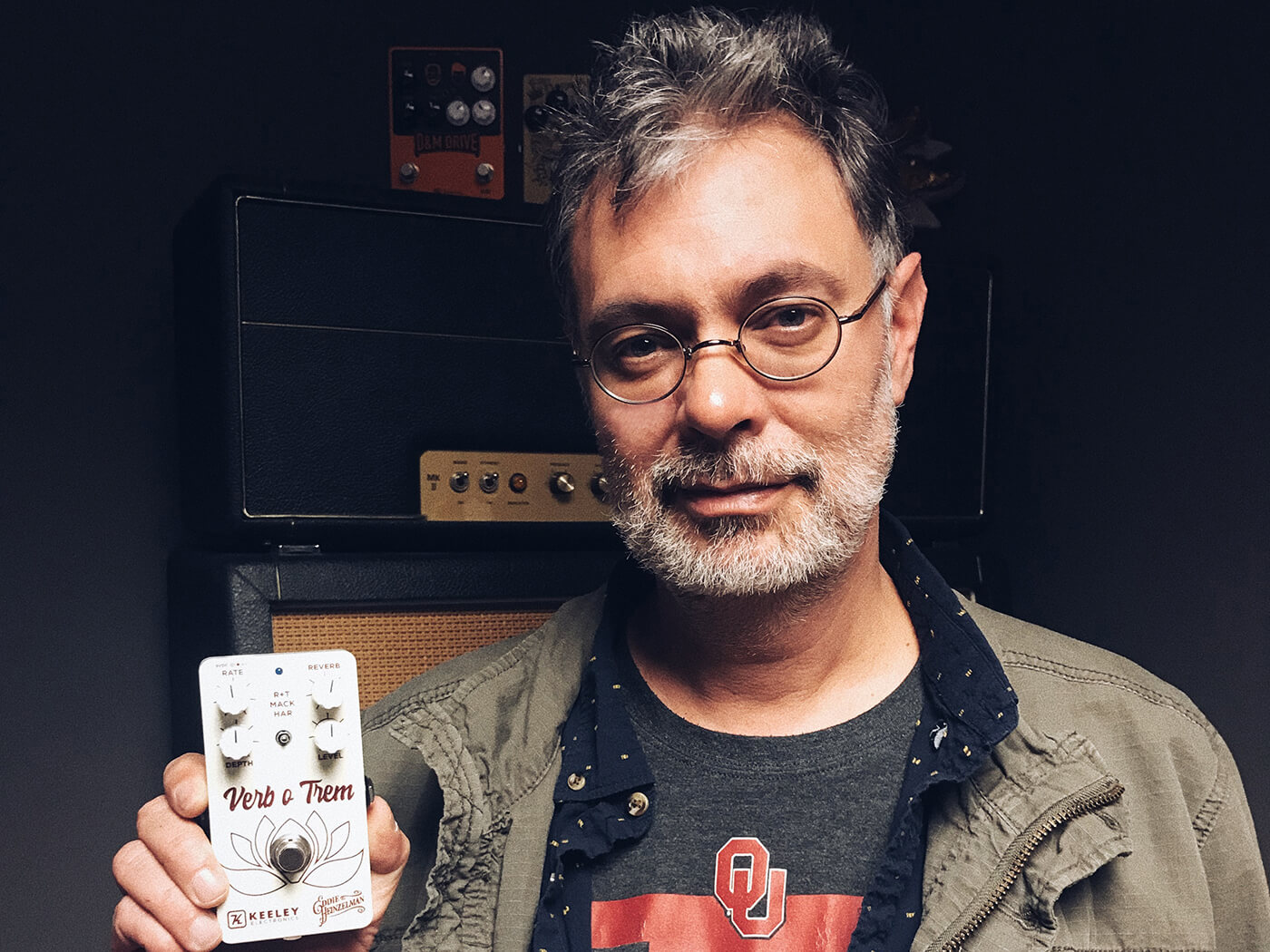
For pedal maker Robert Keeley, it has always been about sound first. And isn’t that exactly how it should be? Chasing a love of electronics eventually brought him to where he stands now, as one of the world’s most successful and respected ‘boutique’ pedal makers, with 33 people (24 in production alone) working in his Edmond, Oklahoma, headquarters. Getting there, however, involved following a rather winding road.
Much of Keeley’s youth was spent in various locations around the country, and the world, while his father moved from post to post as a Captain in the US Air Force. For four influential years during his teens the family was at Remstein Airforce Base in Germany. Keeley’s obsessions grew – not only with the guitar, but once he got his hands on a Fostex four-track cassette recorder, he was soon hooked on mastering the art of studio engineering, recording and overdubbing. Once he had tasted the allure of building and modifying circuits for himself, though, the focus was inexorably drawn elsewhere.
While wending his way through a seemingly endless trough of engineering-related educational endeavours – a year-long course in computer building, four years of junior college in electronics, then four years earning a bachelor’s degree in electrical engineering at the University Of Oklahoma – Keeley just kept being drawn time and again back his own true siren’s call questions: how are these sounds made, and how can I make them better?
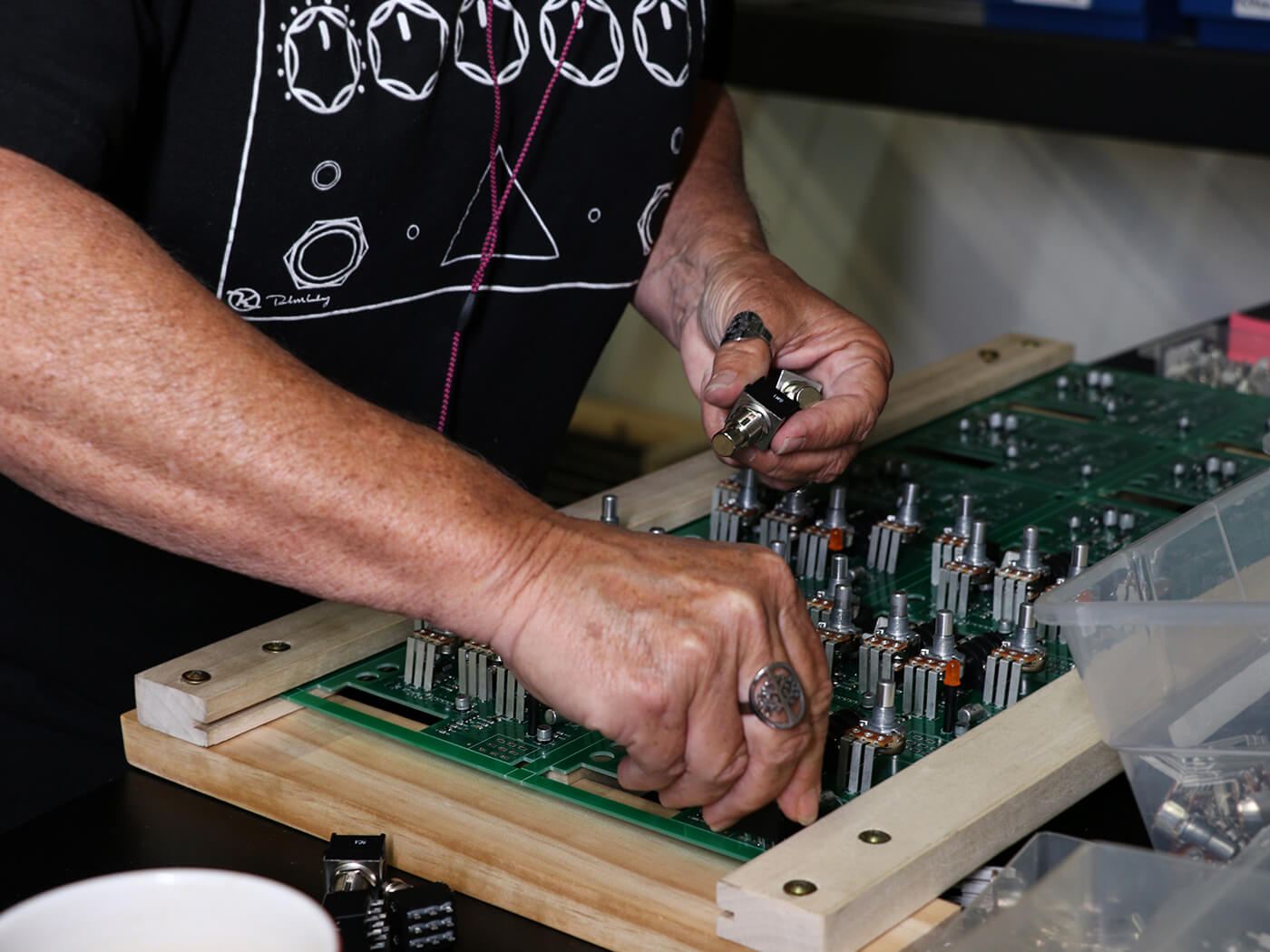
A spark of interest
Like a lot of young would-be whiz kids, Keeley’s first hands-on experience came from a simple electronics project. “The first spark of electronics in my world was making a flashlight in mid-1978 in Upper Michigan,” he tells Guitar.com. “I’d use old paper towel rolls to band together D cells. Getting the wires soldered between the batteries and light bulb was a never-ending struggle in burning my fingers and bad connections that developed by the minute, broken wires all of the time.”
That same year, a Yamaha student model acoustic guitar given to him by his grandmother would help stir another obsession into the pot, as would the virtuosic playing of Edward Van Halen, Yngwie Malmsteen and Stevie Ray Vaughan. Even amid the practical educational undertakings to follow, however, it would take some time for Keeley to turn the focus to designing and creating the effects that would one day carry his name.
Between his junior college and university courses, Keeley took a job at a stereo store, largely installing and modifying car audio systems, and found it a more formative position than the title might imply. “Car stereos were amazing devices, with quad output systems, low voltage supplies, high current, switching designs. There was a ton to learn that would help with effect pedal development.” Applying that to a senior design project at the University Of Oklahoma, for which he created a digitally controlled analogue delay and tuner, finally brought him in from the cold. And the die was cast.
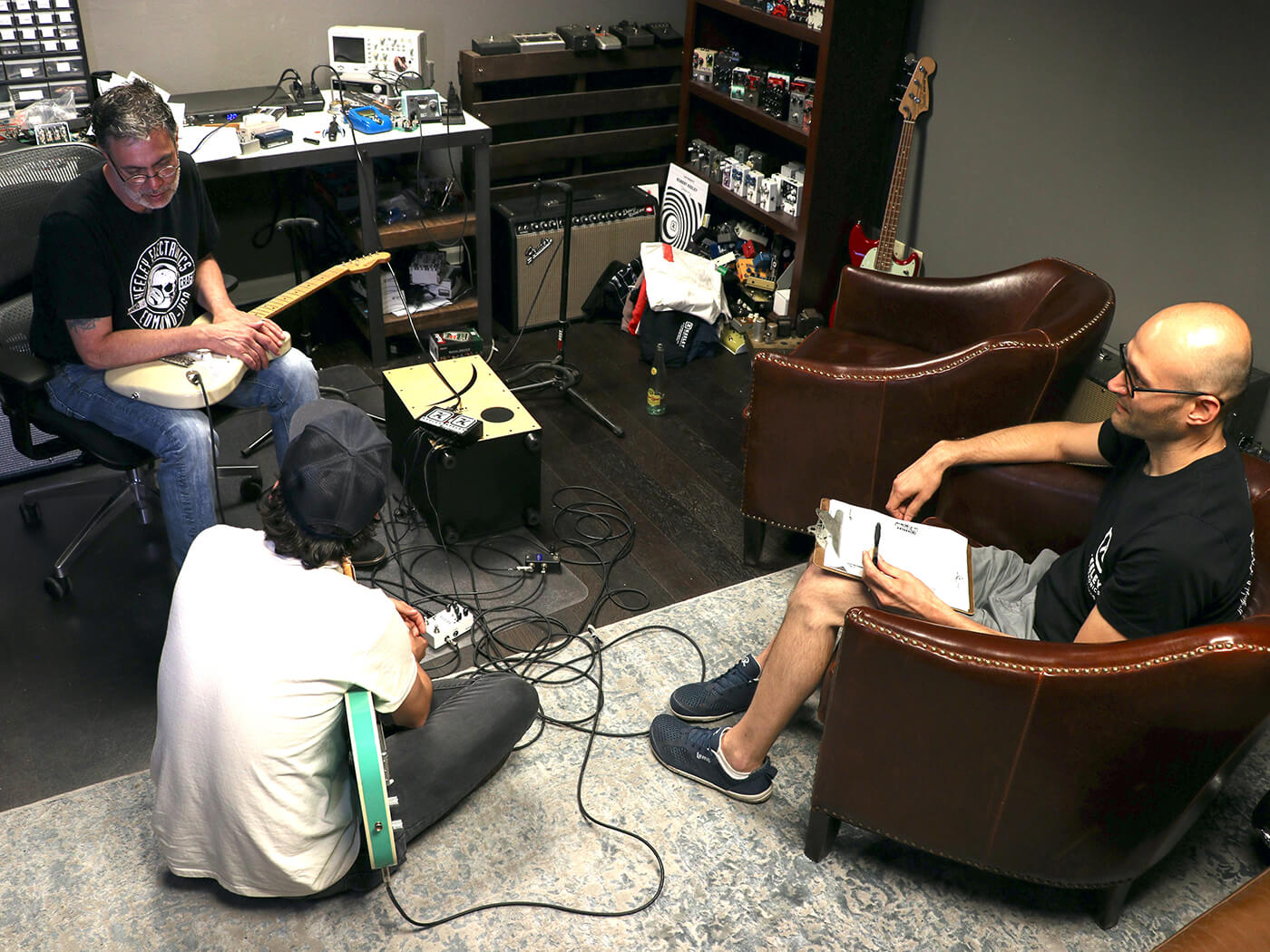
The business itself really came together when Keeley was working as an engineering professor at Vatterott College just outside Oklahoma City. One day he was teaching engineering systems, and seemingly the next he was hiring his own students to help build the pedals that had taken off from his side gig. “The first [Keeley Compressor] went out September 2001, and I had quit my job as a professor at the college in May of 2002.”
Hot-rod mentality
Part of what helped to get Keeley Electronics recognised early on was an enthusiasm for repairing and modifying popular existing pedals: a quick search will still turn up several Keeley-modded Ibanez Tube Screamers, Boss DS-1s, Vox wahs and a gazillion other pedals on the secondhand market. In 2014 the company ceased offering mods of old pedals from other makers in the wake of the rampant success of its own creations. But Keeley himself maintains a deep respect for the classics, married to a hot-rod shop’s enthusiasm for upgrading and supercharging existing platforms to take them into new and exciting territory.
“We’re essentially still doing the same thing [with our own pedals]”, he says. “Big Muffs, Rats, Tube Screamers, the DL4, the TC Electronic chorus and flange, the Boss DD-3 all are still amazing sounds and you can do a lot with the basic building blocks that hasn’t been done. I really want to combine sounds and effects and switching into something that makes music creation fun and easy. I like improvised music. So, as we develop new things, we are always modding our old stuff, making it better, more toneful, more dynamic, responsive, noise-free.”

To that end, and as much as he enjoys designing new creations, he freely admits that – as do most makers – he owes a certain debt of gratitude to the classic, the pedals that still lay the foundations for the vast majority of soundscapes out there.“You have to know the classics,” he asserts. “Not many people are like Z.Vex and Joel Korte of Chase Bliss. Most folks have to build from something inspirational.”
Part of what had drawn him to the market in the first place, though, was that drive to mod and hot-rod effects that was so prevalent in the late-90s and early-2000s boutique wave, when players and small-shop makers had already come to a solid re-appreciation of what the classics could do, and now wanted to push them to do something more.
“It felt like hot-rodding cars and car stereos to me,” says Keeley. “I had a blast building a motor for a [Chevrolet] Camaro and adding nitrous as well as all the suspension tricks one could do. So, adding switches for more bass, more boost, more highs, more ‘tone flow’ from pedals was a natural extension! Home stereo tube-amplifier designs and other high-fidelity marvels influenced my mods and what I brought to the pedal world.”
No compromise
We might call the compressor the ‘pedal that launched a thousand successes’ in the boutique effects industry – well, okay, two or three at least – but several fledgling makers seem to cruise on the strengths of their own reimaginings of the fabled Ross Compressor in the late 90s and early 2000s, and Keeley was preeminent among them. To get there, however, Keeley developed what was far more than just another re-boxed clone. His eponymous Keeley Compressor was his first production model, remains his most successful to date, and it’s one design that has never been left to rest on its laurels.
“The compressor captured my ear from the moment I played the first one,” Keeley recalls. “To date we have sold 80,000 of them over the past 18 years. My Katana design was very popular too. I’m proud of it because it is simply two JFET transistors, super simple, and it sounds incredible. John Mayer has used it for at least 15 years continuously.”
Keeley adds: “The Keeley Compressor has been such a rewarding pedal to build and grow with. I’m fairly certain that it was the first pedal with a blue LED in 2001, which really set it off visually, but sonically I made improvements to the Ross design as well, early on, by using all-metal film resistors and caps and adding a recovery time control (which was accidentally called an attack time control) set it apart from other clones.
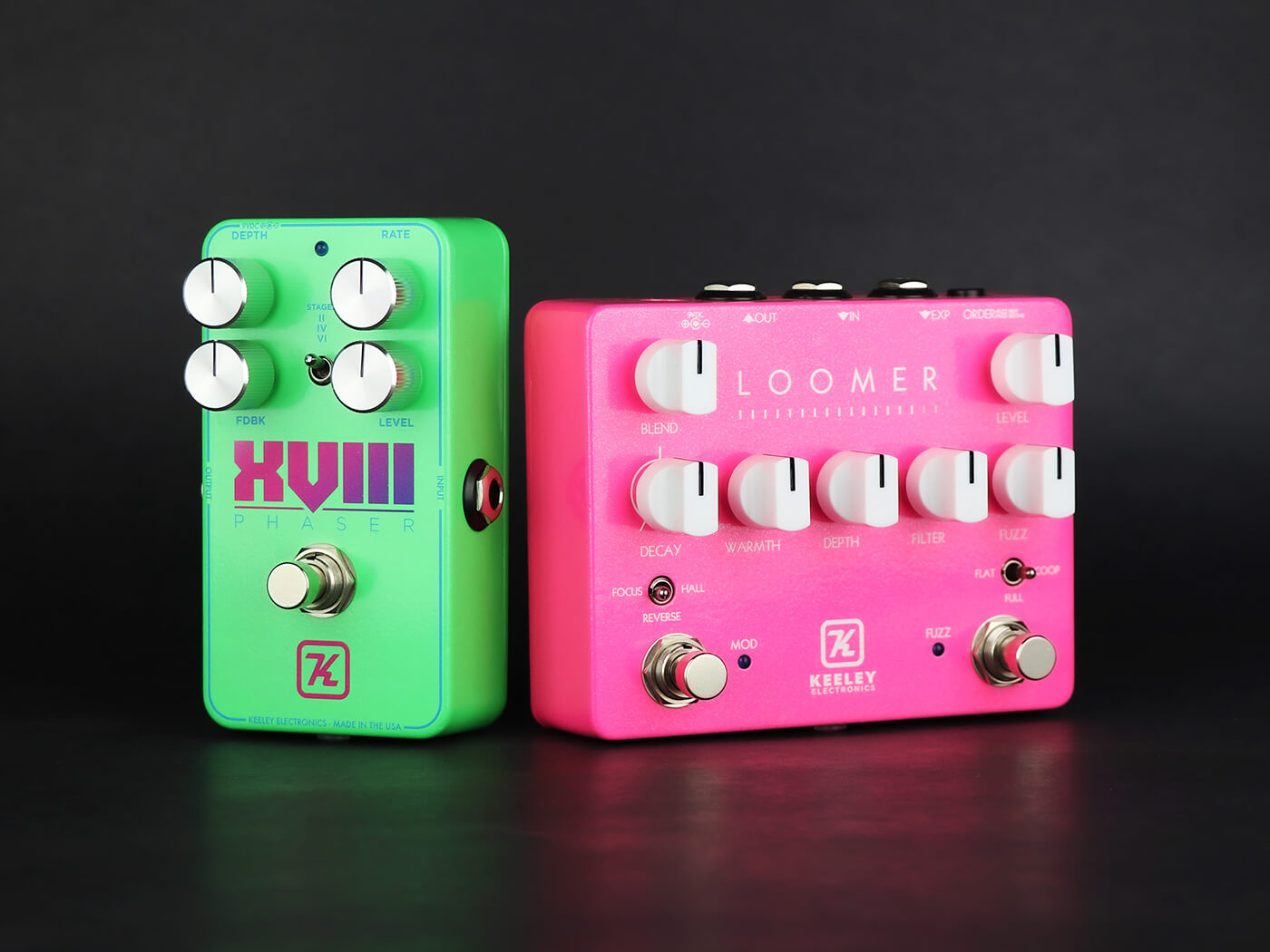
“The big change came three years ago when we released the Compressor Plus, which finally had a blend control and a tone control, what I call a ‘treble recovery circuit’. The tone control came from noise-reduction techniques I saw in Boss pedals. I modified it to work with frequencies that seem to be lost with the reduction in dynamics as a result of compression. I think it turned out really good sounding. I couldn’t be more pleased with the Compressor Plus as it stands now.”
In recent years, a new wave of designs has also chalked up big sales for the company, with the Dark Side, the Caverns, and the D&M Drive all having sold over 10,000 each over the past three years.
“My design team includes Craighton Hale and Aaron Tackett, currently,” says Keeley. “These guys make dreams happen. We have had great initial success in OEM work for other pedal companies, too. This includes the board and surface mount production that Craighton set up, but also the digital reverb algorithms Aaron designed that are used in other brands of guitar effects, such as Ernie Ball, Milkman, Benson, JHS, and Chase Bliss effects pedal designs.”
We can rebuild him, we can make him better
If the pedal market has continued to explode over the past decade, it certainly wasn’t under-supplied in the early 2000s, when Keeley Electronics officially entered the race. What was it, then, that made the former engineering professor and audio enthusiast feel he could do something better?
“That’s a central question that I ask on a daily, heck, hourly basis: ‘How can I do this a lot better?’ That’s how I design. How can I take a list of common complaints and build a modification that solves a problem? How can I combine certain sounds in ways that haven’t been done yet?
“Like the Monterey Fuzz and Rotary Vibe pedal. When I saw Dave Fox doing the Captain Coconut II, I was very excited about combining those things. So when we developed our DSP skills I was able to take an old-school Fuzz Face-style circuit and couple it with our DSP into a small stompbox. I think it was new and fun!”
That attitude persists with each new design that Keeley and the team turn out, along with a conscious effort to avoid taking the urge too far. “Nowadays,” he says, “the first considerations are how do we not over-design this and make it a mess! We’ve got so many ideas that we could implement. Yeah, it’s like, we’re at the whiteboard with design flow charts and block diagrams and lists trying to sort and clarify all the desires from me and my team.”
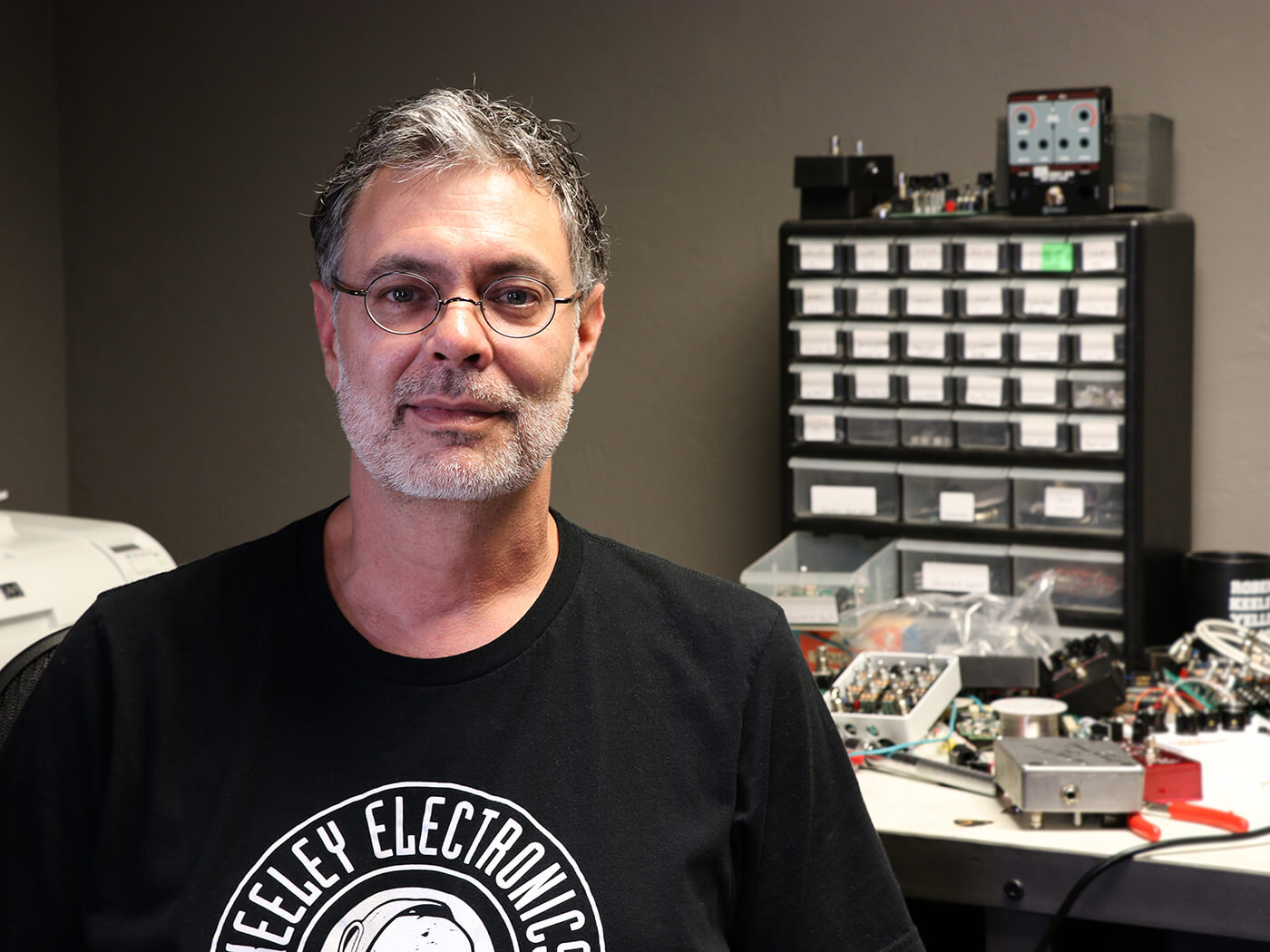
Ultimately, the restraint has served them well, and as much as anything – stellar tone, creative designs, robust construction – Keeley Electronics has become known for pedals that do what they do effectively and efficiently, with little waste exhibited in novelty sounds or pointless functions. Along those lines, there’s one newer pedal he’s particularly proud of, which combines the dreamer and the in pragmatist in him in the perfect ratio.
“I think I’m most proud of the Eccos lately,” Keeley says, referring to his highly functional delay/looper pedal. “That took many years for me and my guys to develop and it’s a huge step up in our abilities, and tone. It’s really a masterpiece to me. It does everything I could hope for and more. I’m also super proud of things like our 30ms and Bubbletron. Those were other rather unique ideas that brought something new to the effects world. I also dig our Monterey and Darkside, those combine tones and functions in a way that I enjoy. They capture a set of soundscapes that are fun to paint with.”
Horses for courses
Although, like many upmarket makers today, Keeley bemoans the ebbing of supplies of US and European-made parts, but he doesn’t waste time fretting over the loss. The key is to find the components that do work and to make the best possible effects you can with what’s available.
“Will I live long enough to see made-in-America electronic parts again?” he muses. “Probably not, but it sure would be nice. At any rate, we have had nice success in building our own circuit boards and understanding what types of parts and materials it takes to make a great-sounding, low-noise device. I have the pickiest of ears listening to our designs, and we are constantly making things better.”
Regarding the tech needed to get them there, he similarly refuses to remain locked in the philosophy that there’s only one way to build a great-sounding pedal: “In some senses the classics are the classics. If you want a germanium fuzz sound, you probably better use a germanium transistor. If you want octave up and down with reverse reverb, you’re going to need DSP and a programmer that can listen to what artists hear and want, and turn that into a reality. And you’re going to need the experience of someone creating a four-layer circuit board.
“In the end, however, it does come down to the basic elements: you have to have high-quality parts and solid construction or the unit will fail and become noisy. Or worse, it will never sound good to begin with.”
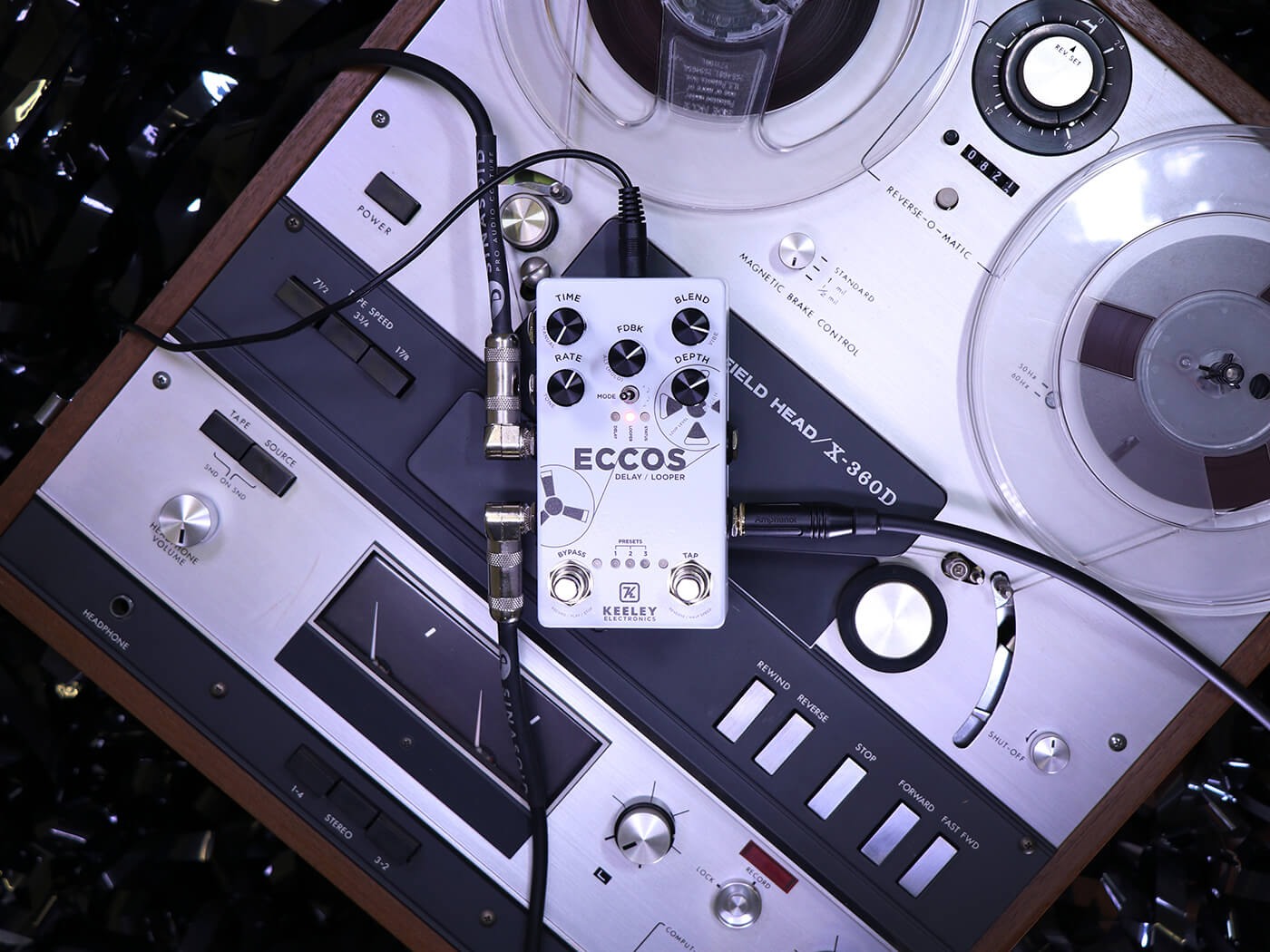
Asked what’s on deck for the future, Keeley exclaims, “Way too many things! My freaking world is packed! A couple artist-related pedals… We just finished a crazy ring-mod-delay voice effect for Larry LaLonde of Primus. That opens up a couple vocal effect ideas for us. A new dual-drive series of pedals is on the design board, kind of like the D&M, a series of three or four that go from mild to radically heavy. There’s a wealth of ideas that we’re planning for on the Eccos platform, something like a really toneful reverb with a freeze type feature, perfect for end-of-pedal board/signal chain sounds.
“I have several OEM pedals that we are bringing to production, and I’ve been working on Bluetooth and WiFi ideas combining with digi-pot ideas to control analogue effect parameters from your phone. Something really simple, like controlling my Tube Screamer-type mods from a phone app, or Fuzz Face-type mods to a Hendrix-inspired effects workstation that you could control.”
So, yeah, there are a few ideas in the pipeline…
Visit robertkeeley.com for more.
